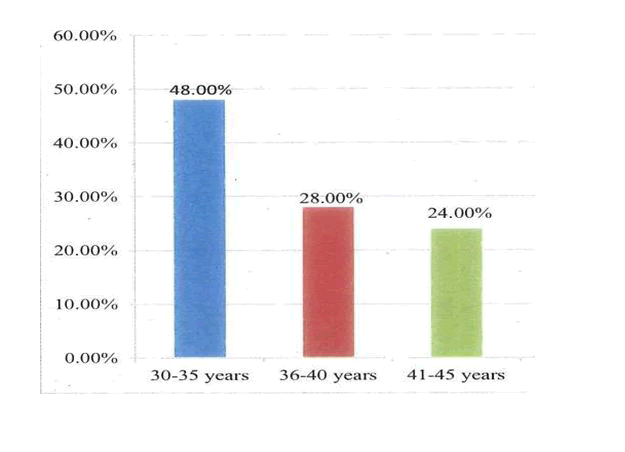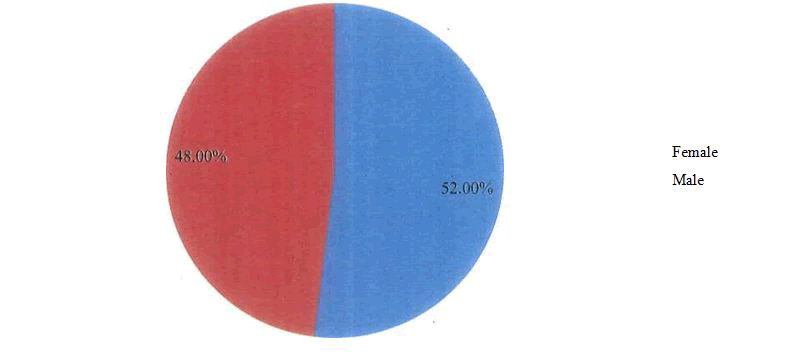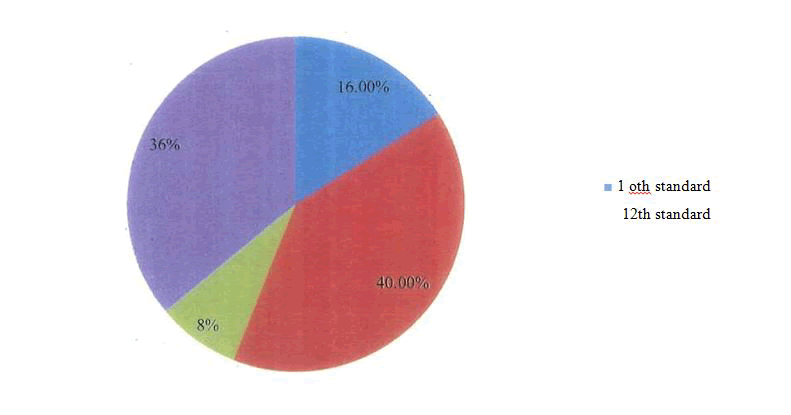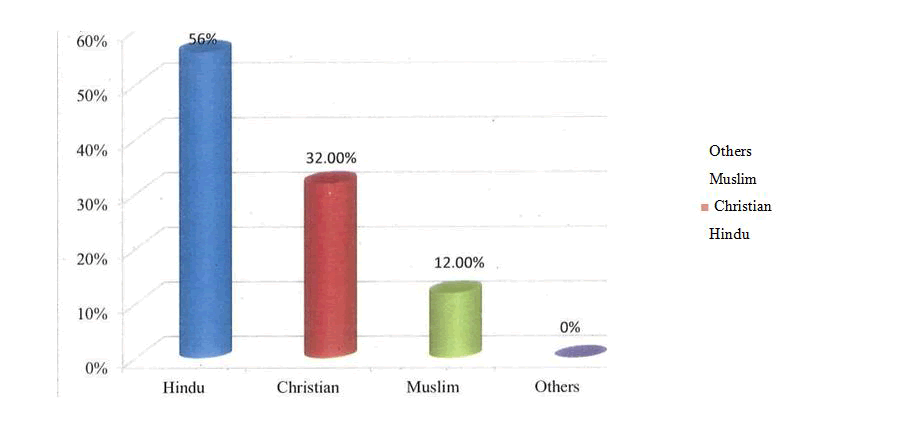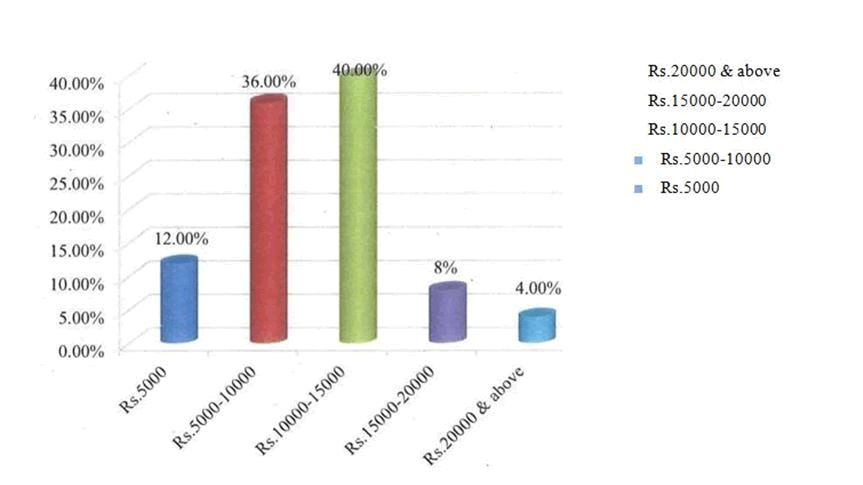Research Article - (2021) Volume 9, Issue 12
A Study to Assess the Knowledge of Tuberculosis among General Population with Selected Demographic Variables
M.Tamilselvi, M.Visithra, Nallathai and AR. Bharathi*
*Correspondence: AR. Bharathi, Department of Nursing, Bharath Institute of Higher Education and Research, Selaiyur, Chennai, Tamil Nadu, India, Email:
Abstract
Tuberculosis is a treatable, communicable disease that has two general states: latent infection and active disease. With few expectations, only those who develop active tuberculosis in the lungs or larynx can infect others, usually by coughing, sneezing, or otherwise expelling tiny infectious particles that someone else inhales. The Present study includes to assess the level of knowledge on Tuberculosis among General population of selected urban area. The Present study focuses on to assess the level of knowledge on Tuberculosis with selected demographic variable.
Keywords
Assess, Tuberculosis, Larynx, General population, Drug treatments, Contagious disease, Tissue, Mycobacterium, Urban area and demographic variable
Introduction
After more than 30 years of declines in reported tuberculosis cases and deaths, the mild- 1980s and early 1990s saw a reversal of that trends in the Unites states. Between 1985 and 1992, reported cases of tuberculosis increased by 20 percent, from 22,201 in 1985 to 26,673. The case rate per 100,000 population increased by more than 12 percent, from 9.3 in 1985 to 10.5 in 1992.
Especially alarming was the increase in the number of more lethal multidrug-resistance strains of mycobacterium tuberculosis, the organism that causes the disease. In the early 1980s, about 0.5 percent of new tuberculosis cases were resistant to the two major drug treatments (isoniazid and rifampicin).
Reasons cited for the increasing rates of tuberculosis and drug-resistant disease include the deterioration of public health programs aimed at preventing tuberculosis and encouraging completion of theapy for the disease(IOM,2000). Incomplete treatment is a major cause of drug resistance. Increasing rates of HIV infections, homelessness, imprisonment, and immigration also contributed to the resurgence of tuberculosis.
Depending on region and age group, upto 35 percent of those with tuberculosis were also infected with HIV.The rise in tuberculosis, particularly multidrug-resistant disease. Created considerable public alarm. For example a 1992 opinion piece in the washingtone post on the combined threat of AIDS, substance abuse and tuberculosis described tuberculosis as a deadly and highly contagious disease "that you could catch from the person next to you in a movie theater or classroom.
Statistics & need for the studyTransmission of the disease under such conditions is not very likely, but the description illustrates the level of concern being voiced by some commentators at the time shows both the increase in the number of tuberculosis cases beginning in the mid-1980s and the subsequent decrease in the number of cases starting in 1993. By 1999, the number of cases nationwide had dropped to 17,528 and the case rate stood at 6.4 per 100,000 population.The rate of multidrug-resistant tuberculosis stood at 1.2 percent of reported cases, approximately one-third the level in 1991.In addition, the death rate had dropped to 0.4 per 100,000 population in 1998. National case rates mask considerable geographic variation in the incidence of tuberculosis. In 1999 case rates varied from less than 1.0 percent.
Tuberculosis continues to pose a major threat to global health and research is a key component of the global plan to stop tuberculosis . Research is particularly crictical for developing new tools and approaches needed for eliminating TB by 2050. Recognizing this, the stop TB partnership and the world health organisation stop TB department have launched the TB research and accelerating progress in TB control towards international targets.One of the main outputs of the TB Research movement in 2011 was the publication of the internatio nal roadmap in October 2011.The process for developing this roadmap has been recently described by lienhardt and colleagues.
Briefly, The research roadmap was developed through a priorty ranking exersise conducted by a multidisciplinary group 50 research experts a multidisciplinary delphi consultation, a series of systematic reviews that were commissioned one was focused on all the TB research agendas that have been published from 1998 to 2010.As a next step we were commissioned to review all the published systematic reviews and meta analyses on TB. This study was not done before, and the incidents rate are increased have taken this.
- Women who are diagnosed to have general population are at increased risk of developing tuberculosis.
- The investigator observed that during the community urban posting most of the general population lack of knowledge regarding tuberculosis.
- This created an interest among the researcher to do this study.
Knowledge: In this present study it refers to correct verbal response of general population regarding tuberculosis as measured by the structured interview schedule.
Tuberculosis: An infectious disease that may affect almost any tissue of the body especially the lungs caused by the organism mycobacterium tuberculosis, and characterized by tubercles.
Assumption- Improved knowledge will bring about changes in the practice of the general population with tuberculosis.
- Appropriate care of general population with tuberculosis is essential to minimize the complication related to tuberculosis.
The study is delimited to
- Women who are able to understand and speak Tamil & English.
- The data collection period is limited to 2 day
Bates,1987 Human beings are infected through the respiratory tract and the tubercle bacilli spread by lymphatic system and blood stream to different organs. The course of tubercular disease is divided into primary pulmonary TB latent TB infection and active TB disease, including tuberculo-meningitis, skin TB, scrofulous TB, pleurisy TB, cordis TB, urinary systemic TB, digestive systemic TB, skeletal TB, etc. people with active TB disease can be treated and cured if they seek medical help. Even better, people with latent TB infection can take medicine so that they will not develop active TB disease.Me Adams et al.,1995 Two major forms of tuberculosis have been recognized on the basis of site of Infection termed as pulmonary tuberculosis (PTB) and Extra pulmonary tuberculosis (EPTB).Pulmonary TB is the most common form of the disease and constitutes about 85% of all TB cases.
Selvaraj, 2000 The genetic factors also play an important role in susceptibility or resistance to a disease. Pulmonary tuberculosis is a granulomatous lung disease and its susceptibility is multifactorial. Socio-economic and environmental factors play an important role, but is has been suggested that susceptibility or resistance to tuberculosis may be under the control of the genetic makeup of an individual . It has been observed that susceptibility or resistance to tuberculosis is affected by both HLA (human leucocyte Antigen) and non-HLA genes. Sharma & Mohan 2004 Extra-Pulmonary tuberculosis occurs in isolation or along with pulmonary TB in case of disseminated tuberculosis .Co-infection with HIV has changed the epidemiology and brought the EPTB in focus again. EPTB contains 15-20% of the cases in immune competent individuals and constitutes for more than 50% of the cases in individuals with HIV infection . Extra-pulmonary tuberculosis mainly, includes lymph node tuberculosis , cutaneous tuberculosis, genitourinary TB, pericardial tuberculosis, bone and joint tuberculosis.
Hazbon et al 2005 Ethambutol is absorbed in gastrointestinal trapt and only a small portion of it is metabolized in the liver. The unchanged drug and its metabolites are excreted in urine.Some of the studies revealed that mutations in embB gene at nucleotide position 306 is associated with resistance (Telenti et al., 1997; Sreevatsan et al 1997), whereas, others observed mutation at position embB306 in ethambutol susceptible isolates (ahmad et, al ,2007). A study with large number of M.tuerculosis isolates found that mutation in enbB306 Were not necessarily associated with resistance to ethambutol, but with a predisposition to Develop resistance to increasing number of drugs and to be transmitted (Hazbon et al., 2005). Brudey et al 2006 This part describes the latest description of statistically, epidemiologically or Phylogeographically relevant clonal complexes of the M.tuberculosis complex dependent On spoligotyping signatures as described in the spolDB4 database. Allix- Beguec et al, 2008 The epidemiology of the diseases has further been influenced with the occurrence of Co-infection with HIV and emergence of MDR-TB (multi- drug resistant tuberculosis). This all necessitated the molecular epidemiological investigation of M,tuberculosis isolates from different patients to differentiate between exogenous and endogenous infections and also detect laboratory cross contaminations. Later on, these fingerprint were also used to determine the transmission link and control strategies with the aid of classical epidemiology.
Saaidi & Ali, 2009 The host factors play an important role in succession of active TB disease. Individuiate, who are malnourished, have general poor health structure , homeless, substance Use of drugs and alcohol are at greater risk of infection .Immuno- supressed (infected with HIV) and immune -compromised patients , like patients with chronic renal disease, neoplastic.Disorders and those who are receiving immunosuppressive therapy are also susceptible to TB.In humans, tuberculosis is primarily caused by Mycobacterium tuberculosis, but other species,such as Mycobacterium africanum, M.bovis, M.microti, M.canettii, M.caprae and M.pinnipedii can also cause TB. These all together form the M.tuberculosis complex (MTBC)
Lawn & Zinnia, Latent TB is inactive, does not show any symptoms and is not contagious, whereas, active TB makes a person sick and is highly contagious. The infected individual becomes immunocompromised for any reasons including malnutrition or infection with HIV and the patients develops active TB disease. In 90% of the cases, M.tuberculosis mainly infects the lungs and causes pulmonary tuberculosis . The patient exhibit different symptoms , such aspersistence of cough for 2-3 weeks and beyond , chest pain, blood tinged sputum, breathlessness, weight loss, loss of apetite, chills, fever and night sweating .
Humphries, 2013 A biochemist, David Sherman, at Seattle Biomedical Research Institute, Washington, says that latency is not a well-defined biological problem. Latent TB is the one where individual tests positive for TB and does not have any clinical symptoms. It has been considered that latency may encompass a spectrum of states, from people who have completely controlled the disease, to those with untreated , sub clinical disease. M. tuberculosis can be contained within granuloma for years. This ability of M.tuberculosis to lie dormant may be an evolutionary strategy.
Materials and Methods
Research methodology provide a brief description of the method adopted by the investigator in this study. This chapter deals with research approach, research design, the setting of the study, the population sample criteria for selection description of the tool, procedure for data collection, plan for data analysis.
Research approachDescriptive approach was found to be suitable for this study.
Research designDescriptive design used in the study to assess the knowledge of all the toddler mothers.
Setting of the studyThe study was conducted in the selected urban area nanganallur, The community area was selected for the study because of availability of participants & feasibility of conducting the study.
Study populationThe target population of this study is all general population of selected urban area.
Sample sizeThe sample size consisted of 25 general population.
Sampling techniquePurposive sampling technique was followed in this study is used, where the researcher is interested in getting in ‘'judgmental’ sampling’. The sample was collected by hand picking few samples which falls in our inclusion criteria.
Criteria for sample selectionSample was selected based on the following criteria.
Inclusion criteriaAll the general population
? Who can understand and speak in Tamil & English
? Who were willing to participate in the study
? Able to follow the instruction
Exclusion criteria? Illiterate mothers
Method of developmentThe instrument was developed based on literature review of
? Textbooks
? Journals
? Internet searching
- Pub med
- MEDLINE
- Wikipedia
- Encyclopedia
- The finding of the study will help the population to gain the knowledge related to tuberculosis.
- This can prevent the complications of tuberculosis, and bring better health outcome of community population.
The validity of the tool was established by submitting it to two experts. They comprised of department of community health nurse, one nurse psychiatrist. Reframing of the tool was done after making the changes which was suggested by the experts, to assess the knowledge of tuberculosis among general population.
ReliabilityReliability of the tool was established by administering the tool to 25 general population.
Descriptive of toolTool 1
It consisted of demographic data of general population which includes , Age in years, education, occupation, life style, religion, types of marriage, previous exposure of knowledge on tuberculosis.
Tool 2
This comprised of a structured knowledge questionnaire. The questionnaire was 25 multiple choice question to assess the knowledge regarding various aspect of tuberculosis. Each question had ‘ONE’ correct response. A score of ‘ONE’ was allotted for every correct answer and a score ‘ZERO’ allotted for every wrong answer. The score was converted into percentage and the resulting score was arranged as follows,
- Inadequate knowledge - 0-30%
- Moderate knowledge - 30-60%
- Adequate knowledge - 60% & above
Data collected from adult in selected area, A study to assess the knowledge on tuberculosis among general population in selected area, Nanganallur have been analysed and tabulated according to plan for data analysis and are interpreted under the following heading.
The data analysed is grouped and organized as foils
Section A
Assessment of demographic variables of adult
Results
Frequencyandpercentagedistributionofdemographicvariable of age of adolescents.
| S.no | Demographic variables | Selected group | ||
|---|---|---|---|---|
| Frequency | Percentage | |||
| 1 | age | 30-35 | 12 | 0.48 |
| 36-40 | 7 | 0.28 | ||
| 41-45 | 6 | 0.24 | ||
Table 1: Frequency and percentage distribution of demographic variable of age of population.
Figure 1: percentage distribution of age of population, N=25.
| s.no | Demographic variables | Selected Group | ||
|---|---|---|---|---|
| Frequency | Percentage | |||
| 2 | Sex | Female | 13 | 0.52 |
| Male | 12 | 0.48 | ||
Table 2: Frequency and percentage distribution of demographic variable of sex of population, n=25.
Figure 2: percentage distribution of sex of population.
| s.no | Demographic variables | Selected Group | ||
|---|---|---|---|---|
| Frequency | Percentage | |||
| 3 | Education | 10th standard | 4 | 0.16 |
| 12th standard | 10 | 0.4 | ||
| Degree | 2 | 0.08 | ||
| None | 9 | 0.36 | ||
Table 3: Frequency and percentage distribution of demographic variable of education of population, N=25.
Figure 3: percentage distribution of level of education of population.
| s.no | Demographic variables | Selected Group | ||
|---|---|---|---|---|
| Frequency | Percentage | |||
| 4 | Religion | Hindu | 14 | 0.56 |
| Christian | 8 | 0.32 | ||
| Muslim | 3 | 0.12 | ||
| Others | 0 | 0 | ||
Table 4: Frequency and percentage distribution of relegion of population.
Figure 4: percentage distribution of relegion of population.
| s.no | Demographic variables | Selected Group | ||
|---|---|---|---|---|
| Frequency | Percentage | |||
| 5 | Type of family | Nuclear | 11 | 0.44 |
| Joint | 14 | 0.56 | ||
| Broken | 0 | 0 | ||
Table 5: percentage distribution of type of family of population family of population, N=25.
Figure 5: percentage distribution of type of family of population.
| s.no | Demographic variables | Selected Group | ||
|---|---|---|---|---|
| Frequency | Percentage | |||
| 6 | Family’s monthly income | Rs.5000/- | 3 | 0.12 |
| Rs.5000-10000/- | 9 | 0.36 | ||
| Rs. 10000-15000/- | 10 | 0.4 | ||
| Rs. 15000-20000/- | 2 | 0.08 | ||
| Rs.20000 & above | 1 | 0.04 | ||
Table 6: Frequency and percentage distribution of demographic variable of monthly income of population, N=25.
Figure 6: percentage distribution of type of family income of population.
With regards to age, in the study group the majority of the population 12 (48%) were aged years, 7 (28%) were aged in 36-40 years, 6 (24%) were aged in 41-45 years. With regards to gender in the study group the majority of population 13 (52%) were females and minority of them 12 (48%) were males.With regards to educational level in the study group the majority of population 4 ( 16%) were studied 10lb standard, 10 ( 40%) were studied 12th standard, 2 (8%) were studied degree courses, 9 (36%) were uneducated.In terms of religion in the study group the majority of population 14 (56%) were Hindu, 8 (32%) were in Christian, 3 ( 12%) were in Musilm. In term of family type in the study group the majority of population 11 (44%) were nuclear family, 14 (56%) were joint family. With regards to family income in the study group the majority of population 3 (12%) were earned less than Rs.5000, 9 (36%) were earned above Rs.. 5000 - 10000, 10 ( 40%) were earned Rs. 10000 - 15000, 3 (12%) were above Rs.20000.
Discussion
The discussion of the results of the data analyzed based on the objectives of the study. The problem statement is ‘ A study to assess the knowledge on tuberculosis among the general population. The research design adopted in this study was pre- experimental research design. The research was done among the general population in selected area,Nanganallur. The study finding are discussed .
Demographic variablesWith regards to age, in the study group the majority of the population 12 (48%) were aged SO- 35 years, 7 (28%) were aged in 36-40 years, 6 (24%) were aged in 41-45 years.With regards to gender in the study group the majority of population 13 (52%) were females and minority of them 12 (48%) were males. With regards to educational level in the study group the majority of population 4 ( 16%) were studied 10th standard, 10 ( 40%) were studied 12th standard, 2 (8%) were studied degree courses, 9 (36%) were uneducated. In terms of religion in the study group the majority of population 14 (56%) were Hindu, 8 (32%) were in Christian, 3 ( 12%) were in Musilm. In term of family type in the study group the majority of population 11 (44%) were nuclear family, 14 (56%) were joint family.With regards to family income in the study group the majority of population 3 (12%) were earned less than Rs.5000, 9 (36%) were earned above Rs.. 5000 - 10000, 10 ( 40%) were earned Rs. 10000 - 15000, 3 ( 12%) were above Rs.20000.
Summary conclusion implication
The study,the implication for nursing practice, the implication for nursing education, nursing research, nursing administration and recommendations for future research.
Summary of the studyThe study was undertaken to evaluate the knowledge of Tuberculosis with selected parameter among all general population in selected community area of Nanganallur,
This following objectives were set for the study
> To assess the level of knowledge on Tuberculosis among General population of selected urban area.
> To assess the level of knowledge on Tuberculosis with selected demographic variable.
Design
Descriptive design was used in this present study to assess the knowledge of all the general population.
Sampling technique
Purposive sampling technique was followed in this study. Where the researcher is interested in getting in expensive approximation of the truth. The sample is collected by hand picking a few samples.
Conclusion
The findings of this study to assess the knowledge of Tuberculosis among general population. The results of this present study show that general population women have inadequate knowledge of Tuberculosis .There is a need for emphasis on the national and global level on the importance of Tuberculosis.
Implication
The findings of study have practical application in the field of nursing. The implication of study are discussed in four areas namely nursing practices, nursing administration, nursing education, nursing research.
Implication for nursing practices
Nurses must do screening of all general population, for early identification and prevention of the complication of Tuberculosis is possible.
The nurses can plan instructional module and organize teaching program for general population.
Nursing education
> Nursing student can be specially trained to assess and monitor the health status of general population.
> Nursing educator can encourage the conduct the teaching program for the general population about diet, physical activity, exercise and personal hygiene.
Nursing administration
> Nurses administrators can organize continuing education program for nursing personal regarding health assessment of general population.
> The nurse administrators can prepare adequate learning general population for giving health education in selected urban area.
> The nurses administrator can prepare adequate assessment protocols for assess the health status of Tuberculosis.
Nursing research
> The study motivates for undertaking studies related to this field.
> The study can be baseline for further studies to build upon.
Funding
No funding sources
Ethical approval
The study was approved by the Institutional Ethics Committee.
Conflict of interest
The authors declare no conflict of interest.
Acknowledgements
The encouragement and support from University, Chennai,India is gratefully acknowledged for providing the laboratory facilities to carry out the research work.
References
- Abebe, Gemeda, Deribew Amare, Apers Ludwig, and Woldemichael Kifle, et al. "Knowledge, health seeking behavior and perceived stigma towards tuberculosis among tuberculosis suspects in a rural community in southwest Ethiopia." PloS one 5, (2010): e13339.
- Agboatwalla, M, Kazi GN, Shah SK, and M. Tariq. "Gender perspectives on knowledge and practices regarding tuberculosis in urban and rural areas in Pakistan." EMHJ 9, (2003): 732-740.
- Jaramillo, Ernesto. "The impact of media-based health education on tuberculosis diagnosis in Cali, Colombia." Heal poli plan16, (2001): 68-73.
- Koay, TK. "Knowledge and attitudes towards tuberculosis among the people living in Kudat District, Sabah." Med J Malaysia 59, (2004): 502-511.
- Pishkar, Mofrad z, Sabzevari S, and Mohammad Alizadeh S. "A survey of knowledge and attitude in medication controls of Tuberculosis patients referring to Zahedan anti TB centers in 1999." (2001): 153-160.
Author Info
M.Tamilselvi, M.Visithra, Nallathai and AR. Bharathi*
Department of Nursing, Bharath Institute of Higher Education and Research, Selaiyur, Chennai, Tamil Nadu, IndiaCitation: M.Tamilselvi, M.Visithra, Nallathai, AR. Bharathi A Study to Assess the Knowledge of Tuberculosis among General Population with Selected Demographic Variables, J Res Med Dent Sci, 2021, 9(11): 1-7
Received: 01-Dec-2021 Accepted: 15-Dec-2021 Published: 22-Dec-2021

